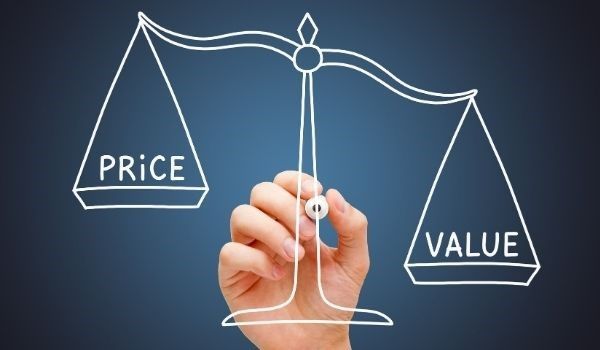Many Factors Determine Practice Values

Many dentists I meet with are under the misleading impression that their practice has a value equal to their annual gross. They've read or been told that if their annual fees are $300,000, their practice is worth $300,000. No more, no less.
Other than being a very simple method of valuation, this "rule of thumb" approach to value has no validity. Practice value may be greater than, equal to (wholly a coincidence) or less than its annual gross. Categorizing all practices to be the same with gross fees being the only contributor to value is preposterous.
To illustrate that other factors determine practice values let's compare two practices. Practice A had gross fees of $216,649 during the previous 12 months. Practice B's gross fees were $218,802. Based on the notion that a practice is worth its annual gross fees, both sellers should have received approximately the same amount for their retirements. The practices weren't sold at those prices, for reasons we'll explore.
Under previous ownership, Practice A had approximately 200 fewer active patients than Practice B, but Practice A was enjoying the influx of 14 new patients a month compared to only six by Practice B. Also, the potential in Practice A seemed higher in that the latest census reported growth up 12 percent in the area compared to a 1 1/2 percent decline in Practice B's neighborhood.
The value for patients vary considerably from practice to practice because of differences in patient profiles. Such things as age of patients, the proximity of their homes to the dental office, dental IQ (recall effectiveness), crown-and-bridge acceptance, paying habits, percentage of patients with insurance and percentage of medical-assistance patients are all variables that prospective buyers consider. Based on the profile of patients in Practice A, the buyer was willing to pay $28 more per active patient than the buyer of Practice B.
In evaluating the size and utilization of the offices, Practice A had three operatories with room for a fourth in a 1,250-square-foot space, whereas Practice B had only two operatories and no room for expansion in a 580-square-foot area. Practice A also had a private office, a staff room and a full-time hygienist. Practice B employed a hygienist three days a week.
The location of the Practice A office in a strip-mall also was considered to be more desirable than Practice B's location on the 4th floor of a large professional building.
The appraisal of equipment and furnishings at fair-market value also were considerably higher in Practice A, $42,500 compared to $17,200. Practice A was computerized, whereas Practice B utilized a service bureau for its patient billings.
Accounts receivable are another area where buyers and sellers negotiate. It may be desirable for the buyer to purchase the receivables, at a discount, since this will reduce, and perhaps eliminate, the need to borrow working capital. In our example, Practice B had more accounts receivable, $46,800, than Practice A with $43,500, but other factors made Practice A's receivables more desirable. In Practice A and B, the collection ratios were 98 and 94 percent, respectively, but Practice A's receivables were greater after we deducted all accounts over 90-days past due.
It should come as no surprise that Practice A and Practice B did not sell for the same price even though their annual gross productions were basically the same. In fact, Practice A sold for $56,000 more than its counterpart in a market where the same prospective buyers looked at both practices (93.7 percent vs. 67.2 percent of annual gross, respectively).
As you can see, the market value of the tangibles, practice and area growth, office size, expansion possibilities, patient profiles and location were all characteristics that resulted in a greater value for Practice A.
In establishing a selling price on your practice, remember that there are a multitude of factors that must be considered. As my colleague, Hy Smith, stated in Dental Economics, "Anyone can render an opinion, but a qualified opinion requires expertise that can only be gained through experience and education."
CONTACT US
4411 Suwanee Dam Road, Suite 420
Suwanee, GA 30024
USEFUL LINKS
STAY INFORMED
You need a helping hand with your project?
We will get back to you as soon as possible
Please try again later


